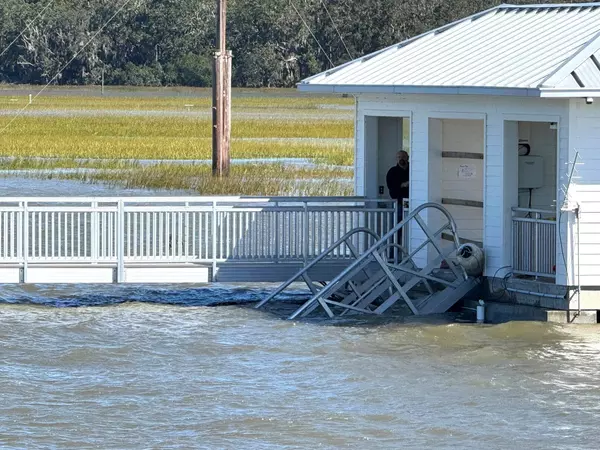
As Chicagoans head into the heart of the holiday travel season, I’ve got a suggestion for those who’ll be flying: Take some time to organize your travel documents before heading to the airport. It won’t take more than five minutes, and this effort could save you some frustration.
Travelers Aid Chicago, part of the Heartland Alliance, supervises more than 100 information desk volunteers at O’Hare International Airport. I’m one of them.
We answer questions about restaurants, parking, pet relief areas and other airport issues. Most important, though, is when we help passengers who don’t know what airline they’re flying on, their correct gate or terminal or, even sometimes, what airport they need.
That first question — What’s the correct airline? — can be tricky. Airlines sometimes place their passengers on a partner airline, and it can be up to travelers to know that. This happens through a booking arrangement called a “code share,” by which two partner airlines sell tickets to the same flight, but only one airline will be making the flight.
Often, this won’t matter. American Airlines, for example, uses its subsidiary Envoy Air to handle some of its flights, but Envoy uses the same terminal (Terminal 3) and gates as American. United Airlines does this, too, with partners such as SkyWest.
This matters more significantly on international flights. Examples: American Airlines and British Airways are partner airlines that fly to London, but from different O’Hare terminals. Same with United Airlines and Air Canada, both of which fly to several Canadian cities.
You may book your flight on one of these airlines but could be placed on a partner airline because of the departure time you picked. Get this wrong when you’re heading for O’Hare, and you might miss your flight.
Travelers can avoid such airport hassles by checking their flight number. Look for a two-letter airline code on your travel document (UA for United, AA for American, DL for Delta Air Lines, WN for Southwest Airlines, etc.). It’ll be followed by several numbers.
Travelers Aid volunteer manager Tony Medina explains a simple web search of that flight number can tell you your flight’s departure gate. Aviation apps such as FlightView or FlightStats can also tell you what airline is operating your flight. It may not be the one you booked on.
O’Hare is an extremely busy airport, with an average of 2,400 flights a day. Delays and gate changes do happen, and the airport has some quirks. JetBlue uses Terminal 2 for its ticketing and check-in counter but flies from a G hallway gate in Terminal 3. (It’s close to Terminal 2, though.) Southern Airways Express has a Terminal 3 check-in desk, but uses a gate in Terminal 2.
Those are just a few more reasons you’ll want to check everything.
Know the codes: ORD is for O’Hare
The worst situation is when someone asks why their flight isn’t on a nearby departures board. What I don’t want to see on their boarding pass is this departure code: MDW. That means the flight is leaving from Midway Airport, not O’Hare, which is ORD. (Several of O’Hare’s airlines also have extensive Midway schedules.)
The traveler’s reaction is usually horrified embarrassment or even anger. And the result is never good – sometimes a costly cab ride to Midway but usually a rebooking.
The No. 1 priority is to know exactly where to go at O’Hare. A quiz: Are you flying to Germany on Lufthansa? Yes? Where’s your check-in? The correct answer is Terminal 1. Yes, Terminal 1.
As Tony Medina notes, Terminal 5 has the unfortunate nickname of “O’Hare’s international terminal.” “International arrivals terminal” would be more precise because the U.S. Customs office is there.
Several dozen international carriers are indeed located in Terminal 5, but most of O’Hare’s international departures are from other terminals: United, Lufthansa and All Nippon Airways use Terminal 1. Air Canada departures and arrivals are in Terminal 2. American, Spirit Airlines, Iberia and Japan Airlines departures are from Terminal 3. Terminal 5 handles the rest of O’Hare’s international departures — and many domestic flights, too (Delta Air Lines, Southwest Airlines, Frontier Airlines and Sun Country).
If you get to O’Hare and remain uncertain about where you need to be, you now know what to do: Just ask for help. Medina points out that airline, security and concession workers may have good knowledge of their specific airline or terminal, which is fine, but we at TAC recommend asking someone wearing a blue vest — that’s us, the Travelers Aid Chicago volunteers. We know the full airport quite well.
Jon Ziomek is a Chicago writer and longtime O’Hare Airport volunteer.
The Sun-Times welcomes letters to the editor and op-eds. See our guidelines.
The views and opinions expressed by contributors are their own and do not necessarily reflect those of the Chicago Sun-Times or any of its affiliates.







